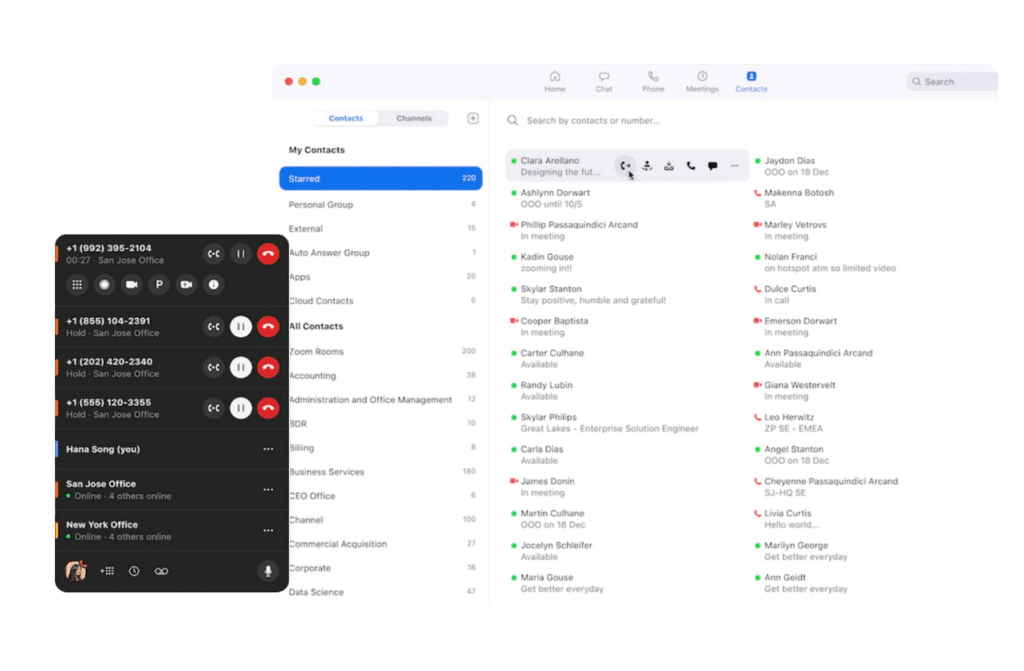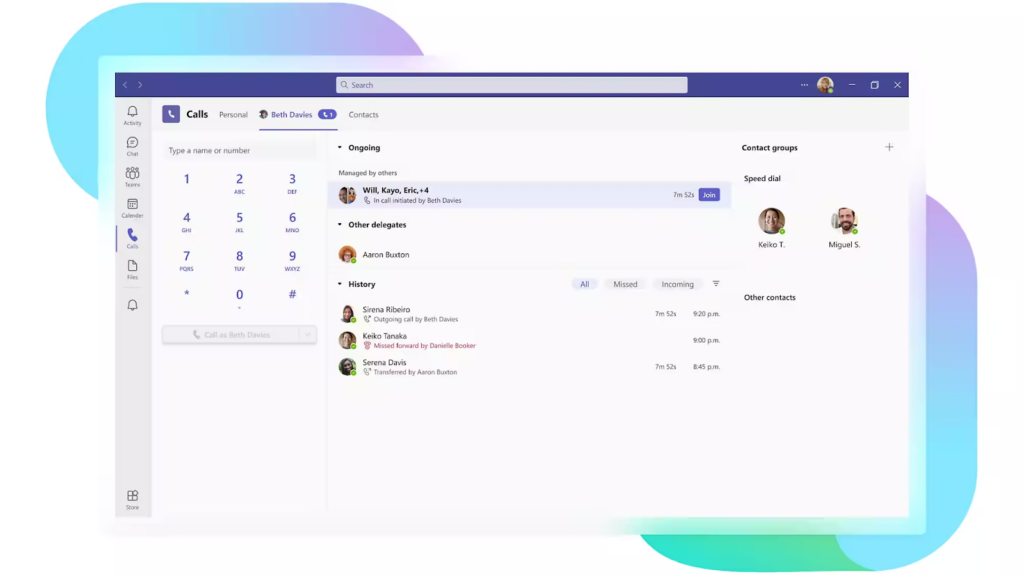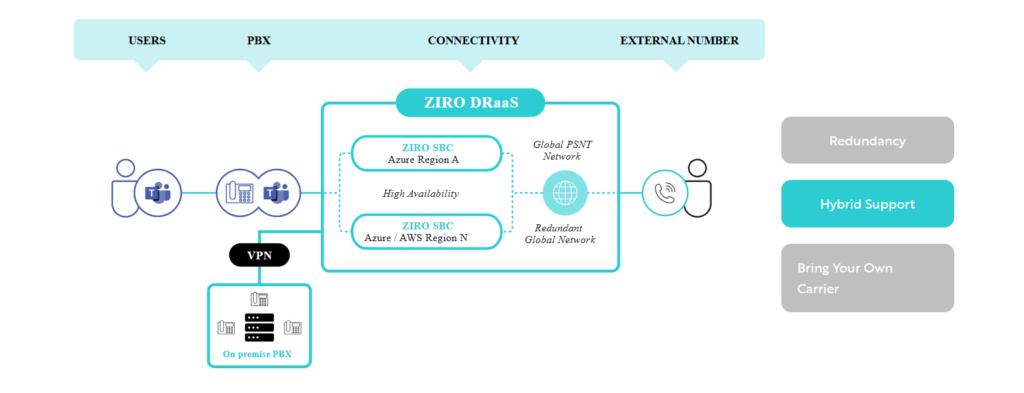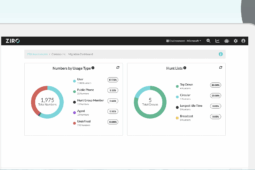
Choosing the right VoIP solution for your business can significantly impact your communication efficiency and overall productivity.
Zoom Phone and Microsoft Teams Phone are two leading contenders in the market—and each offers a number of compelling (and sometimes at-odds) features. So, the question is, which one is the best fit for your organization?
To help you make an informed decision, this ZIRO guide compares Zoom Phone and Microsoft Teams Phone in terms of their key differences, features, pricing, and integrations. Read on to find out which VoIP solution comes out on top.
What Is Zoom Phone?
Zoom Phone is a cloud-based VoIP solution designed for modern business communication.

It’s integrated nicely into Zoom’s unified communications (UC) platform and offers a feature-rich service supporting seamless voice and video interactions. With enterprise-grade security, global coverage, and advanced AI-powered functionalities, Zoom Phone is tailored for businesses seeking a reliable, scalable, and flexible phone system.
Key Features
- AI-Powered Features: Includes post-call summaries, task extraction from voicemails, voicemail prioritization, and Team SMS summaries.
- Global Coverage: Built on a resilient cloud infrastructure with global network capabilities.
- Secure Communications: Utilizes SIP over TLS 1.2 and AES 256-bit encryption.
- Flexible Integration: Compatible with third-party apps like Microsoft, Google, and Salesforce.
- Provider Exchange: Options for BYOC (Bring Your Own Carrier) and cloud peering to maintain existing PSTN connectivity.
Pricing
- US & Canada Metered Plan: $120/year/user (pay-as-you-go with metered calling)
- US & Canada Unlimited Plan: $180/year/user (includes unlimited regional calling)
- Global Select Plan: $240/year/user (offers unlimited regional calling in one of 48 countries and territories)
Pros
- Advanced AI tools for post-call summaries, task extraction, and voicemail prioritization
- Extensive global coverage ensures reliable communication across different regions
- Enterprise-grade security features safeguard communications
- Integrates seamlessly with major third-party applications
- Cloud-based infrastructure with high uptime and flexibility
Cons
- Basic plans do not include outbound calls—this is an add-on feature
- Features like extensive integrations and AI capabilities might be excessive for smaller teams
What is Microsoft Teams Phone?
Microsoft Teams Phone offers an integrated cloud-based telephony solution within the Microsoft Teams platform.

It provides a comprehensive communication tool that blends voice and video calls with the extensive capabilities of Teams, making it ideal for businesses seeking seamless collaboration and connectivity within the expansive Office 365 ecosystem.
Key Features
- Integrated Ecosystem: Features deep integrations with other Office 365 tools like SharePoint, OneNote, and Outlook.
- Basic Call Control: Includes making and answering calls, merging calls, transferring calls, and accessing voicemail.
- Call Queues and Presence: Automatically redirects incoming calls to the next available team member and displays their availability status.
- Call Analytics: View reports and dashboards on usage, call quality, and more to help optimize communication strategies.
- Advanced Call Control: PSTN calling, contact center features, and extensive device compatibility.
- Flexible Calling Plans: Options include standard, pay-as-you-go, domestic, and international calling plans.
- Integration: Deep integration with Microsoft 365 and Teams for enhanced collaboration.
- Security and Reliability: 99.999% uptime SLA and robust security features.
Pricing
- Phone Standard: $8/user/month (annual billing) – This plan does not include PSTN calling capabilities.
- Phone with Pay-As-You-Go Calling (Country Zone 1 – US): $11/user/month (annual billing)
- Phone with Calling Plan (Country Zone 1 – US): $15/user/month (annual billing)
- Phone with International Calling: $32/user/month (annual billing)
For businesses that want to add calling to their Microsoft Teams Phone system, ZIRO offers a Direct Routing as a Service (DRaaS) solution. If you’re on the Phone Standard plan, this is especially useful since it means you can make and receive calls to non-Teams users.
Pros
- Native integration with Microsoft Teams and Office 365
- Flexible options, including domestic, international, and pay-as-you-go plans to suit various needs
- 99.999% uptime SLA ensures dependable service
- Includes call control, transcription, and advanced security measures
- Intuitive interface that integrates smoothly with other Microsoft services
Cons
- Less straightforward for businesses not already using Microsoft 365 or Teams
- Higher cost for international calling when using Microsoft Calling Plans
Zoom Phone and Microsoft Teams Phone: Side-by-Side Comparison
| Zoom Phone | Microsoft Teams Phone | |
| User Experience | User-friendly with intuitive navigation | Unified experience within the Microsoft ecosystem |
| Deployment and Setup | Easy setup with BYOC and cloud peering | Simple for Microsoft 365 users; supports Operator Connect and Direct Routing |
| Security and Compliance | SIP over TLS 1.2, AES 256-bit encryption; strong security | 99.999% uptime SLA; robust security and compliance with industry standards |
| Scalability | Flexible cloud-based infrastructure | Scalable within Microsoft 365 ecosystem |
| Integration | Integrates with Salesforce, Google Calendar, and other third-party apps | Deep integration with Microsoft 365 |
| Pricing | Tiered structure: metered, unlimited, global plans | Streamlined tiers: Standard, Pay-as-You-Go, Domestic, International |
User Experience
Zoom Phone is praised for its user-friendly interface and intuitive navigation. It provides a cohesive experience with Zoom Meetings and integrates effectively with multiple third-party applications.
Conversely, Microsoft Teams Phone offers a unified experience within the Microsoft ecosystem, with an interface that is intuitive for users familiar with Microsoft products but may seem complex to newcomers.
To simplify the transition for those who haven’t used Teams before, providers like ZIRO offer solutions to help manage and optimize your Microsoft Teams Phone System. This drastically reduces setup complexity and makes it easy for any business to get up and running with Teams Phone.
Deployment and Setup
Deploying Zoom Phone is straightforward. Options for Bring Your Own Carrier (BYOC) and cloud peering allow businesses to maintain their existing PSTN connectivity. The setup process is designed to be user-friendly, with seamless integration for various third-party applications.
Microsoft Teams Phone benefits from an easy deployment process for businesses already using Microsoft 365. Its integration with Microsoft services, along with options like Operator Connect and Direct Routing, supports a variety of deployment scenarios.

At ZIRO, we enhance this experience with our tailored Microsoft Teams DRaaS solution, ensuring a smooth and customized setup for your needs.
Security and Compliance
Zoom Phone secures communications by employing SIP over TLS 1.2 and AES 256-bit encryption, providing enterprise-grade security and compliance with major standards.
Microsoft Teams Phone, meanwhile, boasts a 99.999% uptime SLA and is backed by Microsoft’s extensive security framework. It offers strong security measures and complies with industry standards, ensuring reliable and protected communication.
Scalability
Zoom Phone offers a flexible, cloud-based infrastructure that adapts as a business grows. Its global network capabilities ensure that it can support expansion and integrate with various third-party applications.
On the other hand, Microsoft Teams Phone is also scalable, particularly well-suited for businesses already embedded within the Microsoft 365 ecosystem. Its flexible calling plans and robust cloud infrastructure support both growth and diverse communication needs.
Integration
Zoom Phone is highly versatile with its integration capabilities, supporting popular tools such as Salesforce, Google Calendar, and various other third-party applications. It offers robust API capabilities, making it adaptable to different business needs.
Microsoft Teams Phone excels in native integration with Microsoft 365 and Teams, delivering a seamless experience for users within the Microsoft ecosystem. It enhances collaboration and productivity through deep integration with Microsoft’s suite of tools.
Pricing
Zoom Phone offers a tiered pricing structure that caters to different regional and usage needs. Options range from metered to unlimited plans and a global plan for extensive coverage. This flexibility allows businesses to choose a plan that aligns with their specific calling patterns and geographical requirements.
Microsoft Teams Phone, on the other hand, provides a more streamlined pricing model with distinct tiers based on calling plans. It offers cost-effective options for users within the US and a more premium plan for international calling, reflecting its focus on integration with Microsoft 365 and Teams.
Choose ZIRO for Your Microsoft Teams Phone Solution
Both Zoom Phone and Microsoft Teams Phone offer robust VoIP solutions, each addressing different needs. For businesses already using Microsoft products, Microsoft Teams Phone is a powerful choice, while Zoom Phone excels in user-friendliness and ease of deployment.At ZIRO, we provide expert guidance for a seamless transition to Microsoft Teams Phone. Contact us to migrate your existing PBX system to Teams Phone and unlock the benefits of a modern UC solution without the hassle of manual setup.
Ready to take your unified communications from headache to hassle-free?
No throwing darts at proposals or contracts. No battling through the back-end. No nonsense, no run-around.



